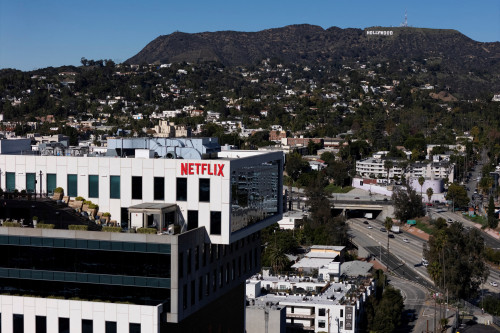(Reuters) – Israel and Hamas have been waging war since gunmen from the Palestinian militant group went on the rampage in southern Israel on Oct. 7, killing 1,200 people and capturing 253 hostages. Israel responded with a military campaign in which more than 35,000 Palestinians have been killed.
The war is the bloodiest ruction in a longer conflict between Israelis and Palestinians that has rumbled on for seven decades and destabilised the Middle East.
WHAT ARE THE ORIGINS OF THE CONFLICT?
The conflict pits Israeli demands for a secure homeland in what it has long regarded as a hostile Middle East against Palestinians’ unmet aspirations for a state of their own.
In 1947, while Palestine was under British mandate rule, the United Nations General Assembly agreed a plan to partition it into Arab and Jewish states and for international rule over Jerusalem. Jewish leaders accepted the plan, giving them 56% of the land. The Arab League rejected the proposal.
Israel’s founding father, David Ben-Gurion, proclaimed the modern state of Israel on May 14, 1948, a day before the scheduled end of British rule, establishing a safe haven for Jews fleeing persecution and seeking a national home on land to which they cite ties dating to antiquity.
Violence had been intensifying between Arabs, who made up about two thirds of the population in the late 1940s, and Jews. A day after Israel was created, troops from five Arab states attacked.
In the war that followed, some 700,000 Palestinians fled or were driven from their homes, ending up in Jordan, Lebanon and Syria, and in Gaza, the West Bank and East Jerusalem.
Palestinians lament this as the “Nakba”, or catastrophe. Israel contests the assertion that it forced out Palestinians.
Armistice agreements halted the fighting in 1949 but there was no formal peace. Descendants of Palestinians who stayed put in the war make up about 20% of Israel’s population now.
WHAT WARS HAVE BEEN FOUGHT SINCE THEN?
In 1967, Israel made a pre-emptive strike against Egypt and Syria, launching the Six-Day War. Israel captured the West Bank and Arab East Jerusalem from Jordan, the Golan Heights from Syria and the Sinai Peninsula and Gaza Strip from Egypt.
A 1967 Israeli census put Gaza’s population at 394,000, at least 60% of them Palestinian refugees and their descendants.
In 1973, Egypt and Syria attacked Israeli positions along the Suez Canal and Golan Heights, starting the Yom Kippur War. Israel pushed both armies back within three weeks.
Israel invaded Lebanon in 1982 and thousands of Palestine Liberation Organization (PLO) fighters under Yasser Arafat were evacuated by sea after a 10-week siege. Israeli troops pulled out of Lebanon in 2000.
In 2005 Israel withdrew settlers and soldiers from Gaza. Hamas won parliamentary elections in 2006, and seized full control of Gaza in 2007. Fighting flared between Israel and Palestinian militants in Gaza in 2006, 2008, 2012, 2014 and 2021.
In 2006, Lebanon’s Iran-backed Hezbollah militants captured two Israeli soldiers in the border region and Israel launched military action, triggering a six-week war.
There have also been two Palestinian intifadas, or uprisings – from 1987 to 1993 and 2000 to 2005. During the second, Hamas and other Palestinian militant groups carried out suicide bombings in Israel, and Israel carried out tank assaults and airstrikes on Palestinian cities.
Since then, there have been several rounds of hostilities between Israel and Hamas, which refuses to recognise Israel and is regarded as a terrorist organisation by Israel, the European Union, the United States and other countries. Hamas says its armed activities are resistance against Israeli occupation.
WHAT ATTEMPTS HAVE THERE BEEN TO MAKE PEACE?
In 1979, Egypt became the first Arab state to sign a peace treaty with Israel, which agreed to return the Sinai Peninsula to Egyptian rule.
In 1993, Israeli Prime Minister Yitzhak Rabin and PLO leader Arafat shook hands on the Oslo Accords establishing limited Palestinian autonomy. In 1994, Israel signed a peace treaty with Jordan. But a summit attended by Arafat, Israeli Prime Minister Ehud Barak and U.S. President Bill Clinton at Camp David in 2000 failed to secure a final peace deal.
In 2002, a proposed Arab League plan offered Israel normal relations with all Arab countries in return for a full withdrawal from the lands it took in the 1967 Middle East war, the creation of a Palestinian state and a “just solution” for Palestinian refugees. The presentation of the plan was overshadowed by Hamas, which blew up an Israeli hotel full of Holocaust survivors during a Passover seder meal.
Further Palestinian-Israeli peace efforts have been stalled since 2014.
Under U.S. President Donald Trump, Israel reached agreements known as the Abraham Accords to normalise relations with several Arab states, including the United Arab Emirates, Bahrain and Morocco.
Palestinians stopped dealing with the U.S. administration after Trump broke with U.S. policy by recognising Jerusalem as Israel’s capital. The Palestinians seek East Jerusalem as capital of their future state.
Qatar and Egypt have acted as mediators in the latest war, securing a truce that lasted seven days, during which hostages held by Hamas were exchanged for prisoners held by Israel, and more humanitarian aid flowed into Gaza.
WHERE DO PEACE EFFORTS STAND NOW?
Talks on a further truce have proven fruitless, and Hamas said on May 10 that efforts were back at square one. Israel want to discuss a temporary pause in fighting. Hamas it will not release hostages without a deal envisioning an end to the war.
U.S. President Joe Biden’s administration has focused on trying to secure a “grand bargain” in the Middle East that would include normalisation of relations between Israel and Saudi Arabia. Riyadh says this would require progress towards creating an independent Palestinian state, which Israeli Prime Minister Benjamin Netanyahu has ruled out.
WHAT ARE THE MAIN ISRAELI-PALESTINIAN ISSUES?
A two-state solution, Israeli settlements on occupied land, the status of Jerusalem, agreed borders, and the fate of Palestinian refugees.
Two-state solution: An agreement that would create a state for Palestinians in the West Bank and Gaza alongside Israel. Netanyahu says Israel must have security control over all land west of the Jordan River, which precludes a sovereign Palestinian state.
Settlements: Most countries deem Jewish settlements built on land Israel occupied in 1967 to be illegal. Israel disputes this and cites historical and biblical ties to the land. Continued settlement expansion is among the most contentious issues between Israel, the Palestinians and the international community.
Jerusalem: Palestinians want East Jerusalem, which includes the walled Old City’s sites sacred to Muslims, Jews and Christians alike, to be the capital of their state. Israel says Jerusalem should remain its “indivisible and eternal” capital.
Israel’s claim to Jerusalem’s eastern part is not recognised internationally. Trump recognised Jerusalem as Israel’s capital, without specifying the extent of its jurisdiction in the disputed city, and moved the U.S. Embassy there in 2018.
Refugees: Today about 5.6 million Palestinian refugees – mainly descendants of those who fled in 1948 – live in Jordan, Lebanon, Syria, the Israeli-occupied West Bank and Gaza. About half of registered refugees remain stateless, according to the Palestinian foreign ministry, many living in crowded camps.
Palestinians have long demanded that refugees and their millions of descendents should be allowed to return. Israel says any resettlement of Palestinian refugees must occur outside its borders.
(Editing by Edmund Blair, Peter Graff and Timothy Heritage)





